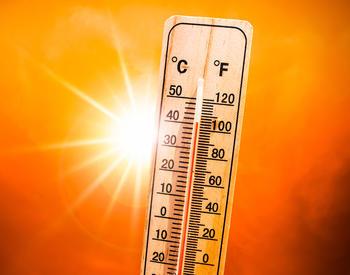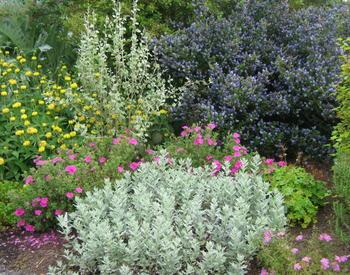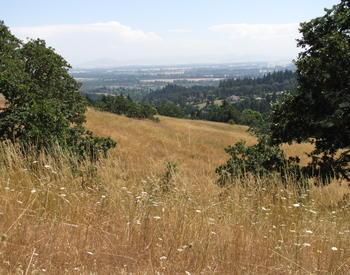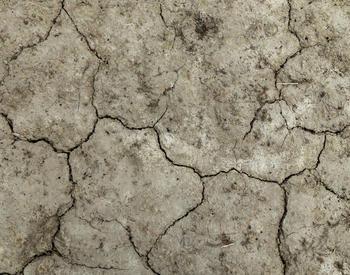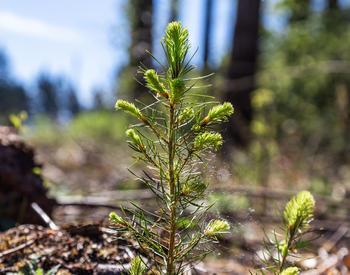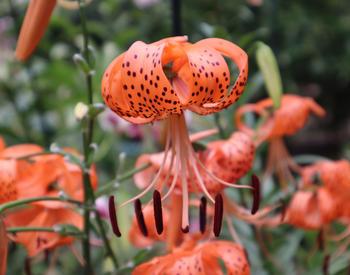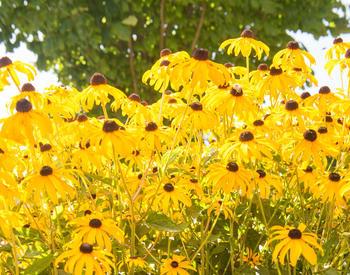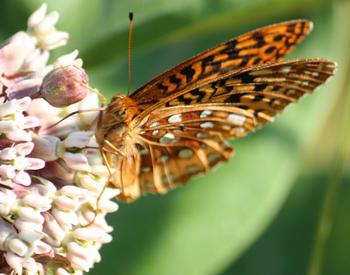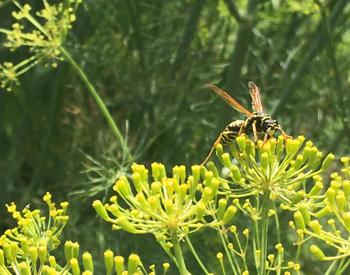People aren't the only ones stressed by extreme summer heat. Bees feel it too. Many gardeners put out shallow trays of water and pebbles to help the bees. What is the science behind this?
How honey bees maintain hive temperatures
Honey bees maintain their hives between 32–36°C (89.6–96.8°F). Outside of this temperature range, honey bee larvae and pupae won’t develop and may die. When temperatures are below freezing, honey bees maintain temperatures in their nests with the help of worker bees. Workers pack together on the outer edge to create an insulative outer shell to hold heat in the center of the nest.
Honey bees are somewhat adapted to extreme heat. As soon as temperatures in a honey bee colony edges up beyond 96.8°F, worker bees line up at the entrance and start fanning their wings (Winston 1987). In addition, a special group of water-foraging bees begins scouring the surrounding area for water, which they collect and bring back to the nest (Kuhnholz and Seeley 1997). The bees distribute droplets of water around the nest, which works in parallel with the fanning to create the equivalent of honey bee AC, or air conditioning. As temperatures rise to extreme heat levels, more honey bees will start to forage for water (Vanderplank et al. 2019).
Help keep honey bee colonies cool
Shallow trays of water with pebbles in the bowl may be placed outdoors or in the garden to support honey bees in a heat wave. The pebbles or small rocks keep worker bees from drowning in the water when they come for a sip.
How bumble bees maintain nest temperatures
Bumble bees may not be able to cool their nests as effectively as honey bees. Although bumble bees engage in fanning behavior during extreme heat events (Gardner et al. 2006), they are better adapted to warm up their nests during cold spells (Heinrich 2004). Large thoracic muscles allow bumble bees to produce heat by "shivering." The thick "fur" of bumble bees helps them to retain heat in their bodies. Both of these traits are thought to be adaptations that help bumble bees warm their hive and to forage at lower temperatures.
Individual bumble bees have a remarkable amount of control of their circulatory and respiratory systems. This helps them to not only conserve heat in their thorax when outside temperatures are cold (allowing them to fly at temperatures as low at 40°F), but also to "dump" heat into their abdomen when ambient temperatures creep above 100°F.
In general, bumble bees begin struggling to fly when temperatures rise above 100°F, with smaller workers being less sensitive to heat extremes compared to larger queens (Heinrich 2004).
There is limited information on how bumble bee colonies keep cool during heat waves. Although bumble bees have been seen collecting water (Ferry and Corbet 1996), it's not clear whether the water is used for cooling their nests. As nest temperatures rise above 90°F, bumble bee queens and workers stop incubating the brood, move off the nest, and the workers begin fanning. By fanning, bumble bees have been shown to lower the temperatures of their nests by 10°F (Gardner et al. 2006). Moreover, many bumble bee species nest below ground, providing some insulation from outside heat.
Bumble bee activity noted by the Oregon Bee Atlas
In the summer of 2021, Oregon experienced a significant extreme heat event. Bumble bee species that started their nests in the spring had large numbers of smaller workers when the last heat wave hit. Others, like the brown-belted bumblebee (B. griseocollis), were almost entirely large queens that had yet to produce worker bees. Bumble bee hives that lacked worker bees when the heat wave hit may have been at greater risk of perishing.
Bumble bees will alter their foraging time to avoid extreme heat. During the extreme heat wave of June 2021, they were seen foraging as early as 5:30 a.m. and as late as 9 p.m. However, these behavioral shifts in foraging time may not be enough to protect the hive. Recent research suggests that extreme heat events are associated with widespread local extinctions in bumble bee species (Soroye et al. 2020).
Do trays of water help bumble bees in a heat wave?
Because they don’t appear to rely on water evaporation to cool their nests to the extent that honey bees do, bumble bees are not likely to take advantage of small trays of water.
What about other bees and heat waves?
Size matters
- Smaller-sized bee species are less sensitive to heat extremes than larger-sized bees (Hamblin et al 2017).
- Some larger bees, such as desert-dwelling large carpenter bees, have unique adaptations to remove heat from their bodies. Carpenter bees have large flat heads that enable them to "dump" heat by flying faster than usual (Heinrich and Esch 1994).
Ground-dwelling bees
- Bees that nest in the soil may be able to "wait out" an extreme heat event in nests that are cooler and underground. The majority of bee species, in Oregon and around the world, are ground-nesting bees.
- The average depth of most ground-nesting bee nests is about 1 foot (Cane and Neff 2011), although the nests of some Australian bees can extend nearly 10 feet underground (Houston 1984)!
- Ground-nesting bees can be pretty tough. Research from OSU found that many ground-nesting bees can survive, and even thrive, severe wildfire (Galbraith et al. 2019).
- Putting out water bowls is not likely to help ground-nesting bees during an extreme summer heat event.
Bees nesting above ground
- Bees that nest above ground in stems and twigs are more vulnerable to temperature extremes.
- Developing bees that have reached pupation prior to heat extremes are more resistant to the heat as compared to feeding larvae or newly laid eggs (Cane and Neff 2011).
- Pupae of the alfalfa leafcutting bee (Megachile rotundata), for example, have been shown to survive for up to three hours at 113°F (Undurraga and Stephen 1978).
- Putting out water bowls is not likely to help cavity-nesting bees during an extreme summer heat event.
Select plants that support many types of pollinators
During a heat wave it’s important that nectar- and pollen-providing plants are not stressed and are ready to start working when the bees show up. Make sure to water your plants in the evenings and use a moisture probe to ensure your plants are not drying out, particularly in container gardens. Additionally, select summer-blooming plants that do well under heat stress and don’t need a lot of watering. For example, sunflowers are a great example of a plant with an exceedingly long tap root that provides good food for bees even when the grass has turned brown. Lavender is another reliable drought-tolerant plant that bumble bees adore.
Plant native plants that tolerate drought:
- Gumweed (Grindelia).
- Tarweed (Madia).
- Goldenrod (Solidago).
- Farewell to spring (Clarkia).
- Snowberry (Symphoricarpos albus).
- Ocean spray (Holodiscus discolor).
- Spirea.
- Douglas aster.*
*Douglas aster supported more bee species than any of the other native plants tested in the OSU Garden Ecology Lab field plots.
Additional resources:
